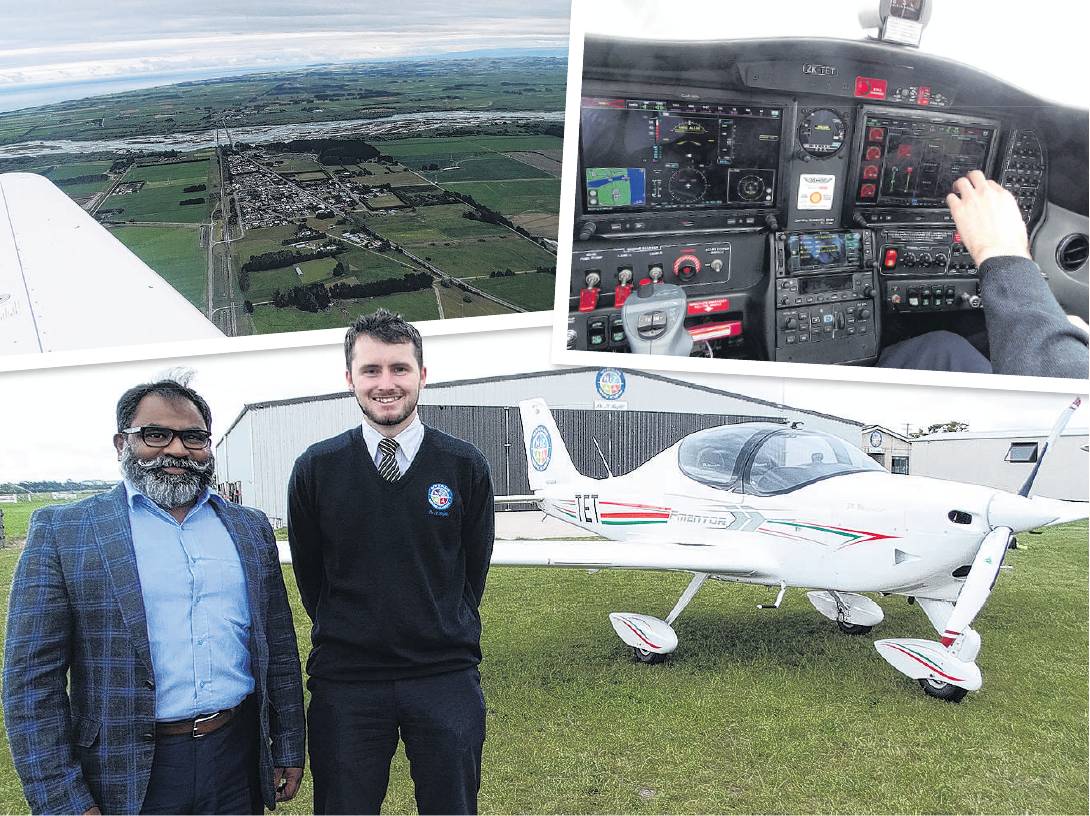Academy keen to spread wings
JULES.CHIN
@oamarumail.co.nz Cadet reporter
The New Zealand Airline Academy (NZAA), based in Oamaru, has won a prestigious Indian business award and is planning to also expand in to the Vietnamese market.
Ranked one of New Zealand’s leading pilot training schools, NZAA has been judged ‘‘best large business’’ at the Indian Business Awards, held in Auckland late last month.
Academy chief executive Jonathan Manuel said the company was pleased to receive the award at a time when it was also working to attract aspiring pilots from Vietnam to train in the South Island.
‘‘It was great . . . Christopher Hipkins and his partner Toni were there along with a number of first-time National MPs,’’ Mr Manuel said.
Based at Oamaru Airport, NZAA has gone from strength to strength and has added new hi-tech planes to its fleet.
The business, which began taking trainee pilots in 2018 and was named ‘‘best medium business’’ at last year’s awards, now has close to 100 students from eight countries including India, Sri Lanka, Singapore and Malaysia.
Mr Manuel attended the Auckland awards ceremony with his wife Beryl Jonathan and co-owners Celroy and Sandy Mascarenhas.
The flight academy recently added two Tecnam P-Mentor planes to its fleet, the first to be brought to New Zealand.
The planes have autopilot features. If a plane goes into an unintentional spin or a stall, the push of a button will bring it back to level flight. They are also equipped with ballistic parachute systems. When activated, the entire aircraft can come down under a parachute. ‘‘It's a matter of safety,’’ Mr Manuel said. ‘‘Most organisations in New Zealand talk about safety. ‘‘For us it’s not only talking about it, but actually putting money where it’s needed.’’
Mr Manuel was part of a recent Aviation New Zealand delegation that travelled to Vietnam to help put New Zealand’s pilot training schools more firmly on that country’s radar.
Since 2015, New Zealand has been a popular choice for trainee pilots from Vietnam due to an aviation cooperation agreement between the New Zealand Ministry of Transport and the Vietnamese Ministry of Transportation.
A series of events in Hanoi and Ho Chi Minh City last month provided an opportunity for international students to meet with representatives of New Zealand’s accredited pilot training schools and alumni.
Mr Manuel, who has worked extensively in the Asian market during the past decade, said no Vietnamese flight students have trained in the South Island since New Zealand reopened its borders after the Covid-19 pandemic.
Mr Manuel said there were a couple of obstacles New Zealand pilot schools faced when trying to attract Asian students.
In the United States, training included only three theory exams compared with 15 in New Zealand.
Students could often finish their training within a year, as opposed to three years.
‘‘They all love New Zealand. They love the place, they love the training.
‘‘But all the complaints were about how it's taken them close to three years.’’
In New Zealand a trainee pilot had to work as an instructor or a tourist pilot, clocking up to 2000 hours of flight time before being able to seek work with the likes of Air New Zealand or Jetstar.
Flight students in Asia could go straight from training school to flying jets.
‘‘Personally, [I] would want them all to come to New Zealand, as the standards are much higher,’’ Mr Manuel said.
‘‘Ultimately it's up to the student to choose.’’
Mr Manuel hoped Aviation New Zealand could develop ‘‘a fit-for-purpose’’ programme that would be attractive to Vietnamese students.
‘‘It's important we produce an offer for the Vietnamese students in New Zealand and make sure that is wellrounded and maybe something we can offer in 12 months,’’ he said.
